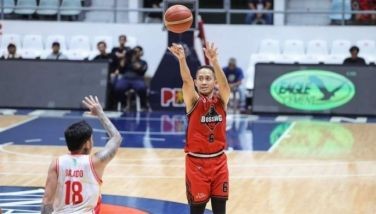Secret of success: 10,000 hours
Is there really anything that we can do to assure success, particularly in sports? After seeing the varying and relative success of our sports teams, particularly in basketball, and the seemingly consistent performance of our individual athletes abroad, particularly in billiards and basketball, is there a reason for the difference?
In Outliers: The Story of Success, Malcolm Gladwell tries to isolate the factors that assure success. He goes through ethnicity, dates of birth, race, cultural background, and even migration patterns throughout major shifts in history. Gladwell writes for The New Yorker, and is the author of trend-spotting best sellers The Tipping Point and Blink. Known for his in-depth (though sometimes obscure) research, he makes entertaining and often valid points.
He begins with a concentrated look at Canadian hockey, seeing that 40 percent of the best players at any level were born in the months of January to March. In fact, there were five and half times the number of players born in January as there were in November. The same phenomenon repeated itself in the National Hockey league, or any league of consequence in the sport.
Gladwell zeroes in on the fact that the age cut-off for hockey in Canada for kids is Jan. 1. But that’s not the full story. The full story is what happens after these kids are taken to the next level. There, they get the exposure to better coaching, more practice, better nutrition, and more attention.
“In all my years in psychology, I have never run into an effect this large,” says psychologist Roger Barnsley, who called attention to the theory of relative age. “You don’t even need to do any statistical analysis.”
In the early 1990’s, psychologist K. Anders Ericsson at Berlin’s Academy of Music. He and two colleagues broke down the point of separation between the most spectacular violinists in the world, and those who weren’t. It turns out that, by the age of eight, the really good musicians started practicing more, from six hours a week at age 9 up to more than 30 hours a week by age 20. By that time, the elite performers had already logged more than 10 thousand hours of practice. Those who were merely good, just about 8,000 hours.
Neurologist Daniel Levitin hit the nail on the head, when he says, “The emerging picture from such studies is that 10,000 hours of practice is required to achieve the level of mastery associated with being a world-class expert - in anything.” Levitin goes further. “In study after study, of composers, basketball players, fiction writers, ice skaters, concert pianists, chess players, master criminals and what have you, this number comes up again and again.”
As they elaborate it, it’s as if you practice roughly three hours a day for more than 10 years. In fact, one of the few exceptions is chess prodigy Bobby Fischer, who achieved grandmaster status in only nine years.
Gladwell says, “Ten thousand hours is the magic number of greatness.”
If that is what it takes, then we should be charting our athletes’ progress with that quantity of hard, educated practice in mind.
- Latest
- Trending































